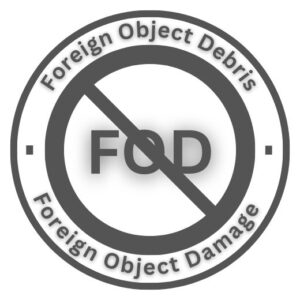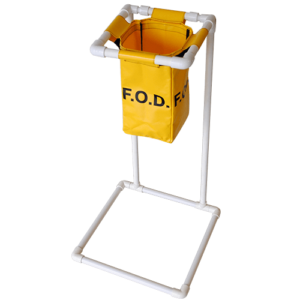 The damage caused by foreign object debris (FOD) at airports can run into millions of dollars annually, impacting airlines, airports, and tenants.
The damage caused by foreign object debris (FOD) at airports can run into millions of dollars annually, impacting airlines, airports, and tenants.
FOD encompasses any object discovered in an improper area that, as a result of its presence, may damage equipment or cause injury to aircraft or airport staff. The aircraft sector is predicted to lose $4 billion annually due to the harm that results. By adopting precautions to avoid airport FOD, airports, airlines, and tenants may cut down on this expense and the potential risk to a safe flight.
FOD is a broad category of items that includes loose hardware, paving fragments, catering supplies, building supplies, pebbles, sand, baggage fragments, and even animals, notably insects that can jam aircraft pitot tubes or static vents if they are not protected.
FOD may be at terminal gates, cargo aprons, taxiways, and in-ground running areas that can harm airplanes. It may break airplanes directly by cutting into their tires, becoming swallowed into their engines, or being transported by jet blast or prop wash and hitting the aircraft. People may also be hurt by the movement of FOD caused by jet blasts or prop wash.
A program of training, facility inspection, maintenance, and coordination among all parties involved can minimize FOD and its consequences.
Responsible:
All airport visitors are responsible for FOD prevention and clearance, although specific tasks must be delegated to qualified individuals who need the proper training and supervision. Quality assurance ensures that responsible organizations and employees do their assigned responsibilities appropriately.
The airport authority is in charge of the runways, taxiways, and general maneuvering areas, but airline representatives or handling agents are typically in charge of making sure the gate and its approaches are free of FOD, including ground equipment, and are clear of ice, snow, or other contaminants that could affect braking action. Contracts for handling must outline the scope of agents’ obligations, and agents’ protocols must outline how these tasks are to be carried out.
FOD Control:
The four key areas that must be addressed for a program to reduce airport FOD effectively are as follows:
- Training
- Inspection by employees of the airline, the airport, and the airplane handling company
- Maintenance
- Coordination
Foreign Object Debris Program:
The detection and eradication of FOD and the potential repercussions of ignoring it should be included in training for all airport, airline, and tenant workers. The broad FOD awareness in the curriculum for airside driver training at many airports can be supplemented with this instruction. Pre- and post-flight inspection procedures are addressed throughout line training, and Foreign Object Debris Program for flight crews includes adhering to the suggested procedures listed in the Flight Crew Operating Manual.
Inspection:
If possible, airline staff members should participate in daily airside inspections with the airport employees. This technique fosters good communication between the airport and airlines and helps people become more familiar with the state of the local airfield.
The removal of FOD and a daily examination by daylight are mandated by the International Civil Aviation Organization (ICAO) for aircraft maneuvering areas. Staff on the airside should check for FOD during regular shifts and do these checks at the start of the day or shift.
 Foreign Object Debris Containers:
Foreign Object Debris Containers:
To collect debris, these bins should be positioned at each gate. To keep the containers from filling up and producing their own Foreign Object Debris Containers, it is essential to empty them periodically. Airport staff members can also use waist pouches to collect trash. Identifying the sources of the garbage gathered in bags and containers can help with the deployment of staff and equipment for more efficient management.
Conclusion
The damage caused by Foreign Object Debris (FOD) at airports can have profound financial and safety implications. The prevention of FOD requires a comprehensive program that includes training, inspection, maintenance, and coordination between all parties involved.
Airlines, airport staff, and tenants all have a responsibility to help reduce FOD and its consequences. This can be achieved through proper training, daily airside inspections, and using FOD containers and waist pouches to collect debris. Taking these precautions reduces the risk of a safe flight and the expenses incurred from FOD damage.
